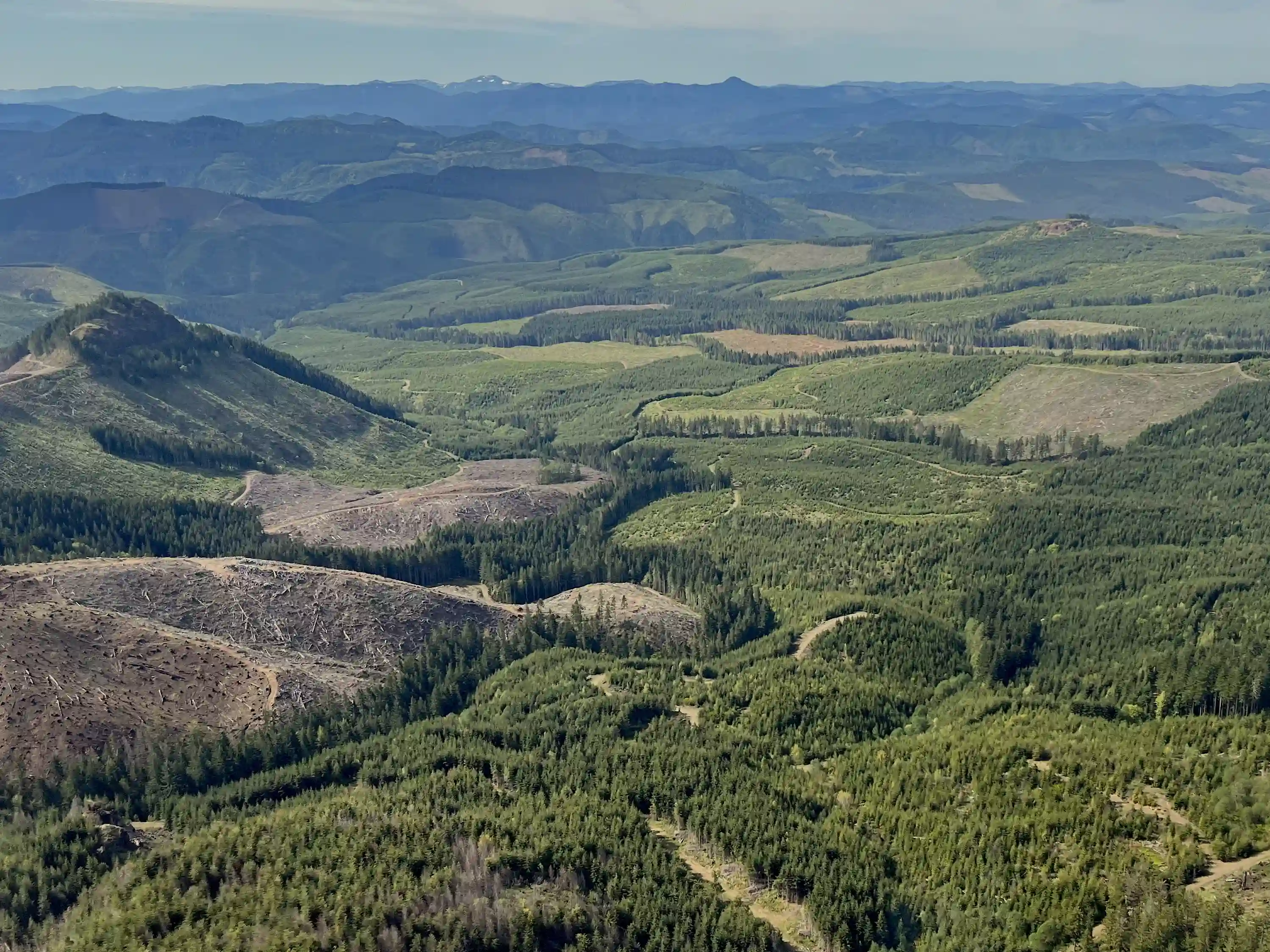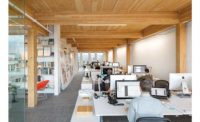The mass-timber revolution is swiftly making its mark on the American landscape. As of March, an estimated 1,384 mass-timber buildings have been constructed or are in design in all 50 states, and in August the 25-story Ascent tower in downtown Milwaukee edged out Voll Arkitekter’s Mjøstårne in Norway for the distinction of the world’s tallest timber building.
Sustainability, heavily emphasized by the timber industry, has been a major accelerant of the phenomenon. Compared to steel or concrete, the benefits of timber construction are significant—both in the long-term storing of carbon and in emissions reductions from forest to jobsite. Yet the idea that “all wood is good” glosses over the intricacies of a complex supply chain, particularly in the Pacific Northwest, whose abundance of high-quality lumber—primarily Douglas Fir—is the mainstay of the U.S. lumber business.
“If architects are going to make these significant sustainability claims, they need to know where the product comes from,” says architect Michael Green, a vocal advocate for timber construction, whose eponymous Vancouver-based firm has millions of square feet of mass-timber projects under way.
Some in the timber business readily concur. “Mass timber is not a panacea; it’s not a silver bullet. The main thing it does is increase demand for lumber,” says Benjamin Hayes, a sixth-generation logger, whose company, Springboard Forestry, offers sustainability consulting and management services to small timber farms in northwest Oregon. “You could get wood that has enormously positive impacts for the climate or enormously negative ones.”
On a recent trip to Oregon, I took a helicopter tour of a working forest owned by Sierra Pacific Industries, one of the largest forest-products companies in the country, managing over 300,000 acres of timber in that state alone. Sierra Pacific is certified by the Sustainable Forestry Initiative (SFI) and prides itself on its ecological harvesting practices, including the preservation of old-growth trees and wildlife habitats, as well as its long-term planning to ensure that harvesting does not exceed growth.
Yet environmental advocates such as the Natural Resources Defense Council have argued that SFI, which certifies more than 63 million acres of forest in the U.S., is too industry-led to truly ensure sustainable forest practices. (Many such activists prefer the more stringent standards of the international Forest Stewardship Council, which has certified 35.2 million acres in the U.S.)

A working forest owned by Sierra Pacific Industries, which manages 300,000 acres in Oregon and emphasizes sustainable harvesting. Photo by the author
From the air, over the forest just outside the city of Eugene, the seemingly endless green density was marred by a smattering of blackened patches (remnants from the 2020 wildfires) as well as some clear-cuts from recent harvesting. Logging trucks could be seen making their way down winding roads. A guide pointed out evidence of forest wildlife—elk, goshawks, and spotted owls are just a few of the hundreds of species that call the forest home.
Though the view was serene, Oregon’s forests have been the site of decades of strife, pitting the state’s major industry against environmental advocates. It is no coincidence that the country’s first and tallest mass-timber buildings rose in the state, which supplies 16 percent of domestic softwood lumber, and whose economic and political history is inextricably tied to the logging industry. If demand for domestic lumber continues to grow as mass-timber projects proliferate, the long-standing conflicts between the two groups could make or break mass timber’s promise of building our way out of the climate crisis.
The “timber wars” of the Pacific Northwest began in the 1970s, when the budding environmental movement prompted a shift both in the public and in industry perception of forests, and trees began to be seen not merely as an asset to be extracted but as a resource to be preserved. The clear-cutting of old-growth forests prompted public outcry, and, in 1976, the National Forest Management Plan made it law that harvested forests had to be replanted. Nearly 20 years later, a campaign to save the endangered Northern Spotted Owl brought the conflict to the national stage, and in 1994 president Bill Clinton signed the Northwest Forest Plan, which allowed litigation to shut down logging on federal land.
“Even today, if a timber sale on federal land is put forward, there’s a very high likelihood that somebody will sue to try to stop it,” says Hayes. “That has created a very toxic political environment between environmentalists and the timber industry.”
But the growing popularity of mass-timber construction has opened a hopeful chapter in the region’s bitter timber wars. In March, the Oregon state legislature passed a significant bill affecting private forest management, the culmination of an historic agreement between environmental groups and the timber industry. The bill limits logging activity around streams to protect water quality and aquatic habitats; sets new standards for the design of forest roads used by loggers; and expands monitoring of compliance.
“We can look toward a new phase of forest management and move beyond the tensions that are still very present in forestry today,” Hayes says of the new law. In his view, the next step is to develop and strengthen infrastructure to help buyers penetrate the opacity of the timber supply chain and choose products with environmental and social value. “Architects, designers, and developers have the potential to dramatically shift what American forests look like through their purchasing decisions,” he says.
Sustainable timber sourcing is a priority for the Portland, Oregon–based architects at ZGF, who have been working with mass timber for at least 20 years. The firm is designing a 1 million-square-foot expansion of the Portland International Airport, which will be capped with an undulating 380,000-square-foot canopy of glulam beams and mass-plywood. “In the Pacific Northwest, timber is in our blood,” says Jacob Dunn, sustainability consultant for the firm. “Any major project, especially one at the front door of the region, requires fundamental engagement with the timber industry, mass timber, and the innovation that’s happening in our region.”
The firm used wood from within a 600-mile radius; all 600,000 board feet of the project are 100 percent traceable to their forest of origin. To ensure this, Dunn and his team analyzed six possible “pathways” timber could take from forest to jobsite to determine the best options. Rather than rely on existing forest certifications, they created custom criteria to include concerns of local economies and indigenous peoples, as well as those about ecological resilience.
“We really wanted to design a more inclusive definition of sustainably harvested wood that avoided the binaries of ‘all wood is good,’ or that we shouldn’t cut down any trees at all,” Dunn says. “All of this requires something that generally never happens, which is architects’ and contractors’ talking to lumber mills and landowners.”
To realize the sustainability promises of mass timber, ZGF’s extensive efforts will have to be embraced by the building industry as a whole. “The current messaging is far too simplistic,” says Dunn. “A little pause and humility goes a long way to help heal some of these divides that we in the Pacific Northwest have been dealing with for decades.”






Post a comment to this article
Report Abusive Comment